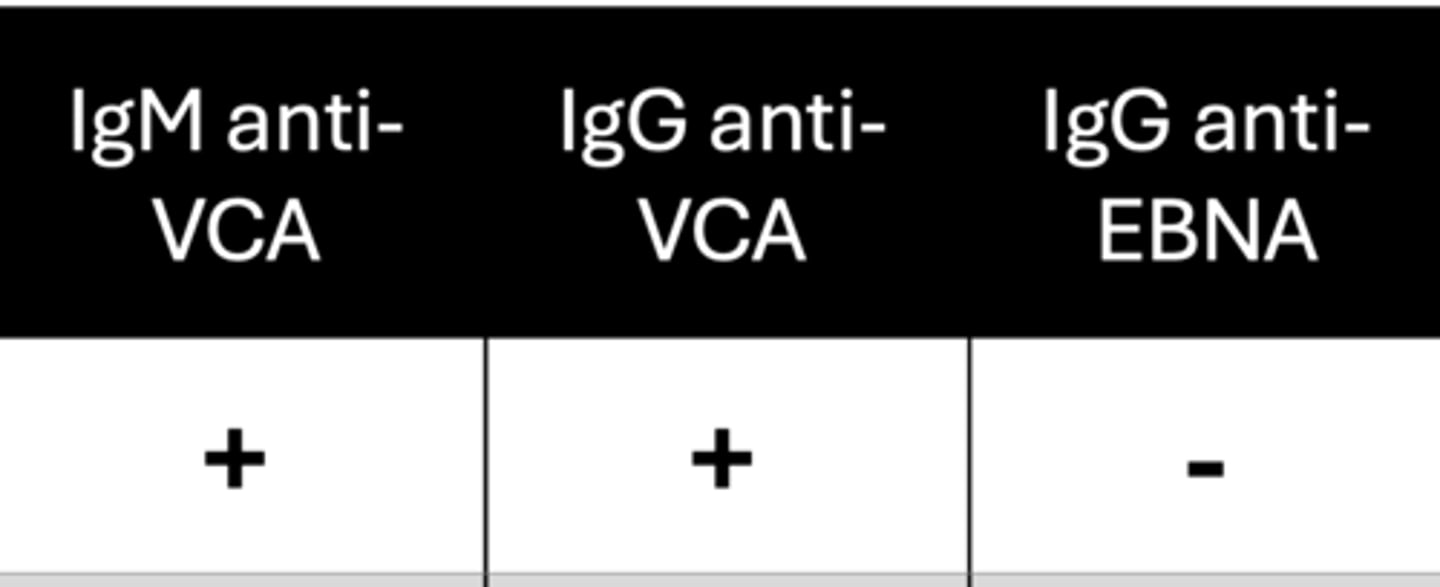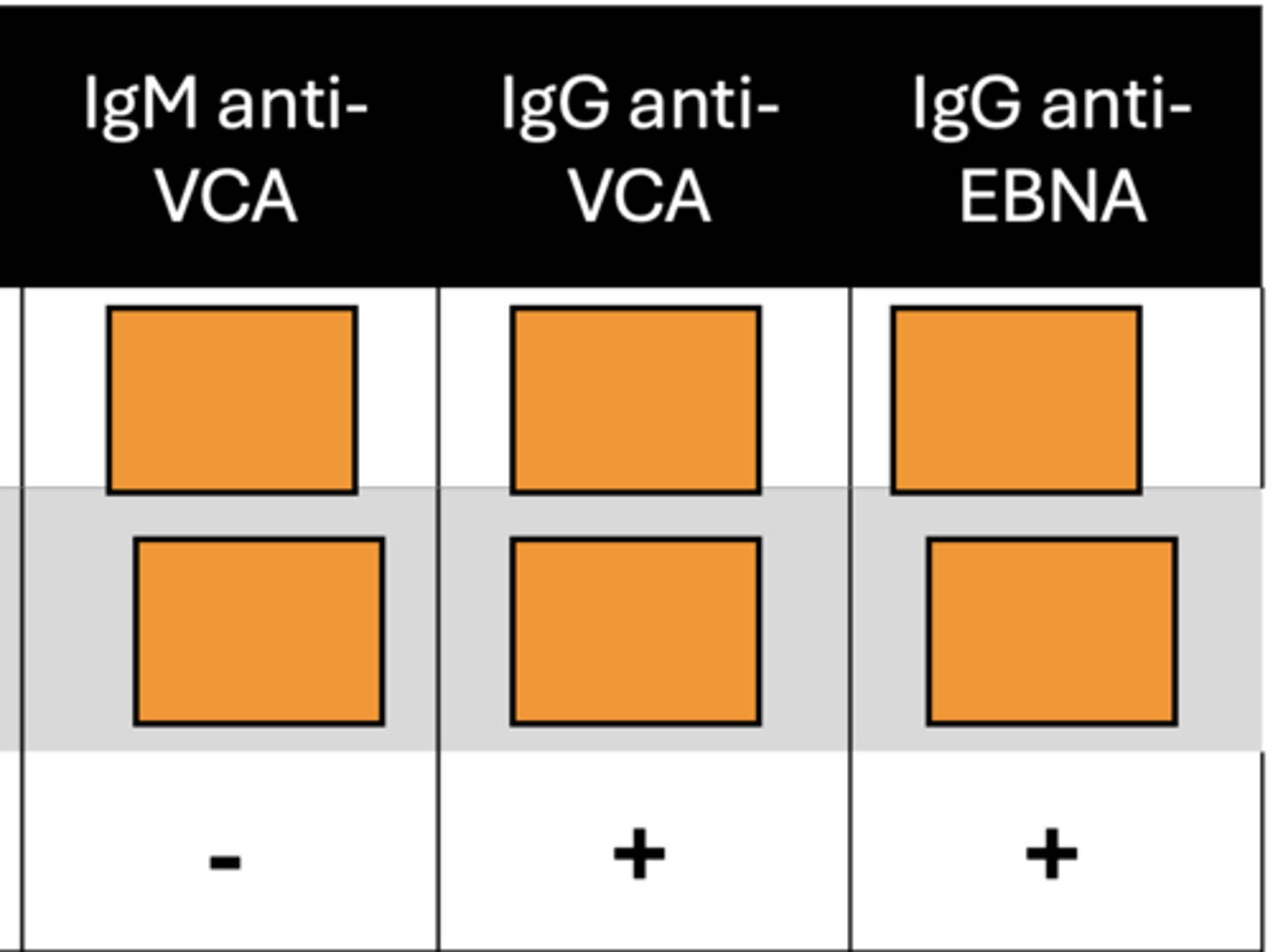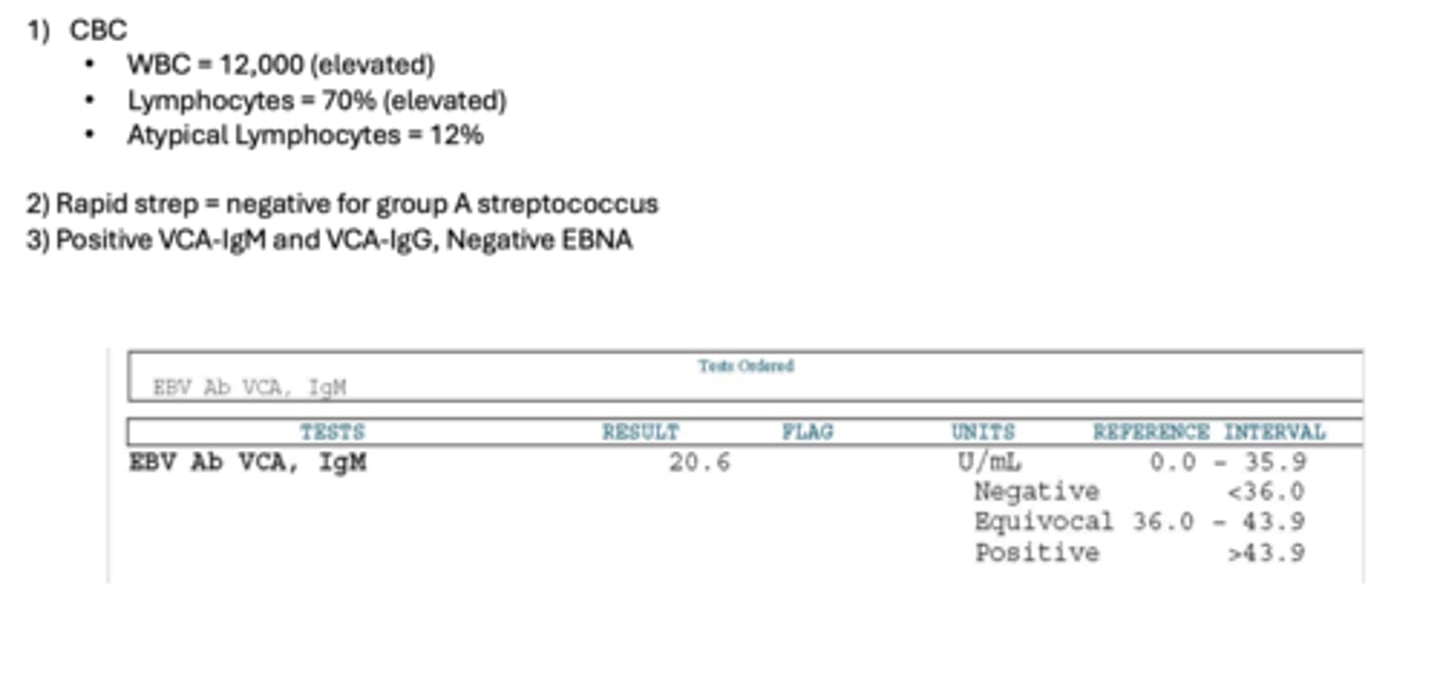Lab med lecture 12
1/41
There's no tags or description
Looks like no tags are added yet.
Name | Mastery | Learn | Test | Matching | Spaced |
|---|
No study sessions yet.
42 Terms
if they are symptomatic and treatment or infection control would help them (elderly/immunocompromised)
when should you test someone for COVID 19
viral test (PCR or antigen test)
what do you need for a diagnosis for COVID 19
PCR
highly sensitive and specific test for COVID 19 and lab based, so it takes longer to get back
antigen test
what are the rapid tests at home for COVID 19 called
false, they are less sensitive and specific
T/F:
antigen tests are highly sensitive/specific
they have false negatives early on so you must repeat a test in 48 hours if symptoms are still suspicious
what is a con about the antigen tests for covid
repeat an antigen test 48 hours later and do a PCR
if the patients antigen test comes back negative but still has symptoms consistent with COVID and was previously exposed what should you do
repeat antigen test 48 hours last and if negative repeat again 48 hours after that and PCR
if the patients antigen test comes back negative for COVID but was in recent exposure what should you do
She may still have COVID; her provider should order an NAAT
A 68-year-old woman with no known past medical history presents to the clinic with nausea, cough, and a fever X 1 day. She has just flown to Utah to visit her pregnant daughter-in-law. She took an at-home rapid antigen test for COVID this morning and it was negative. Which of the following is true?
A
what is the most common flu
A
what is the most severe flu
B
which flu is less common and less severe
C
which flu is an uncommon human pathogen
influenza
this illness is a respiratory illness distingushed by severity of systemic symptoms
NAAT
what is the test done for the flu that is highly sensitive and specific
NAAT
which test for flu can distinguish between A and B
Raid molecular test
which test for the flu is quick and highly sensitive and specific but cannot distinguish between A or B
direct antigen detection
which test for the flu is moderatly specific and sensitive and takes 1-4 hours for results
rapid antigen detection assay
which flu test has the most rapid results but is low sensitivity and specifity
The patient needs further testing prior to making changes in his management
A 73-year-old with a past medical history of Chronic Obstructive Pulmonary Disease (COPD) and Type II Diabetes Mellitus presents to the Emergency Department with 2 days of cough, fever, and shortness of breath. He states that his sister and her four children, who visited him 3 days ago had a cough when visiting and were diagnosed with Influenza B yesterday. The patient's chest x-ray shows bilateral patchy ground glass opacities. You elect to treat the patient for influenza empirically and start Oseltamivir (Tamiflu). A rapid influenza test comes back as below. Which of the following is true?

infectious mononucleosis
Illness caused by Epstein-Barr virus (EBV) which is characterized by a triad of fever, tonsillar pharyngitis, and lymphadenopathy
4 weeks
how long does it take until mono symptoms start to show
2-4 weeks
how long does mono last
>50% lymphocytes and >10% atypical lymphocytes
what must be present to diagnose infectious mononucleosis
EBV specific test
what must be confirmed before diagnosing infectious mononucleous
EBV specific antibodies
what is the gold standard test for diagnosing infectious mononucleosis
VCA antibodies
which antibodies are typically present at onset of symptoms
IgM
this antibody remains elevated for prolonged periods
IgG
this antibody can suggest acute or chronic infection
EBNA antibodies
if this test is positive it suggests mono in the past
EBNA antibodies (IgG only)
present 6-8 weeks after onset of symptoms. If present at onset of symptoms, effectively excludes acute EBV infection
VCA and EBNA
which two types of antibodies are within EBV specific
acute infection
what does EBV VCA IgM Positive suggest
EBNA
if EBV VCA IgM is Positive what must you also get to confirm it
confirms acute infection
EBNA negative
gets more complicated, depends on the timeline for sxs
EBNA positive
acute infection

early convalescence (3-6 weeks)

recovery (>6-8 weeks)

heterophile antibody testing
not recommended, reasonable alternative in young adult patients with fever and pharyngitis, in whom the pretest probability of IM is high
heterophile antibody testing
•If positive, supports diagnosis but false positives occur
•If negative, requires EBV-specific antibodies to confirm
acute mono
what is the diagnosis
